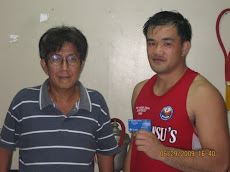
ADA Council on Access, Prevention and Interprofessional Relations
ADA Council on Scientific Affairs
The Councils recognize that dental injuries are common in collision or contact sports and recreational activities.1 Numerous surveys of sports-related dental injuries have documented that participants of all ages, genders and skill levels are at risk of sustaining dental injuries in sporting activities, including organized and unorganized sports at both recreational and competitive levels.1-3 While collision and contact sports, such as boxing, have inherent injury risks, dental injuries are also prevalent in non-contact activities and exercises, such as gymnastics and skating.1,3,4
The Councils promote the importance of safety in maintaining oral health and the use of a properly fitted mouthguard as the best available protective device for reducing the incidence and severity of sports-related dental injuries. The Councils are committed to oral health promotion and injury prevention for sports participants.
Surveillance studies of mouthguard users and nonusers have consistently shown that mouthguards offer significant protection against sports-related injuries to the teeth and soft tissues. Mouthguards provide a resilient, protective surface to distribute and dissipate forces on impact, thereby minimizing the severity of traumatic injury to the hard or soft tissues.
According to a 2007 meta-analysis of studies evaluating the effectiveness of mouthguards in reducing injuries, the overall injury risk was found to be 1.6-1.9 times greater when a mouthguard was not worn, relative to when mouthguards were used during athletic activity.2 Another study of collegiate basketball teams found that athletes wearing custom-made mouthguards sustained significantly fewer dental injuries than those who did not.5
For sporting activities that are inherently contact-oriented (e.g., football), orofacial protectors or faceguards are also appropriate for added safety and protection. The ADA has endorsed the preventive value of orofacial protectors, including helmets, faceguards and mouth protectors, for use by participants in sporting and recreational activities with some degree of injury risk and at all levels of competition.6
Dentists are encouraged to ask patients if they participate in team sports or other activities with risks of injury to the teeth, jaw and oral soft tissues (mouth, lip, tongue, or inner lining of the cheeks). The Councils recommend that people of all ages use a properly fitted mouthguard in any sporting or recreational activity that may pose a risk of injury. The Councils also recommend educating patients about mouthguards and orofacial injury risks, including appropriate guidance on mouthguard types, their protective properties, costs and benefits.6
The key educational message is that the best mouthguard is one that is utilized during sport activities. While custom mouthguards are considered by many to be the most protective option, other mouthguards can be effective if they fit well, are worn properly and stay in place.
Further research is encouraged to strengthen the evidence base addressing the effectiveness of available mouthguard types and intervention programs for reducing the incidence and severity of dental injuries. The Councils will continue to monitor developments in this field to keep its recommendations consistent with current scientific information.
References
1 ADA Council on Access, Prevention and Interprofessional Relations; ADA Council on Scientific Affairs. Using mouthguards to reduce the incidence and severity of sports-related oral injuries. JADA 2006; 137(12): 1712-1720.
2 Knapik JJ, Marshall SW, Lee RB, Darakjy SS, Jones SB, Mitchener TA; delaCruz GG, Jones BH. Mouthguards in sport activities: history, physical properties and injury prevention effectiveness. Sports Medicine 2007;37(2): 117-144.
3 Kumamoto DP, Maeda Y. A literature review of sports-related orofacial trauma. Gen Dent 2004 May-Jun;52(3):270-80.
4 Fasciglione D, Persic R, Pohl Y, Filippi A. Dental injuries in inline skating - level of information and prevention. Dental Traumatology 2007 Jun; 23(3),143–148.
5 Labella CR, Smith BW, Sigurdsson A. Effect of mouthguards on dental injuries and concussions in college basketball. Med Sci Sports Exerc 2002; 34(1):41-4.
6 American Dental Association, Policy Statement on Orofacial Protectors. Transactions, 1995, p. 613.

















